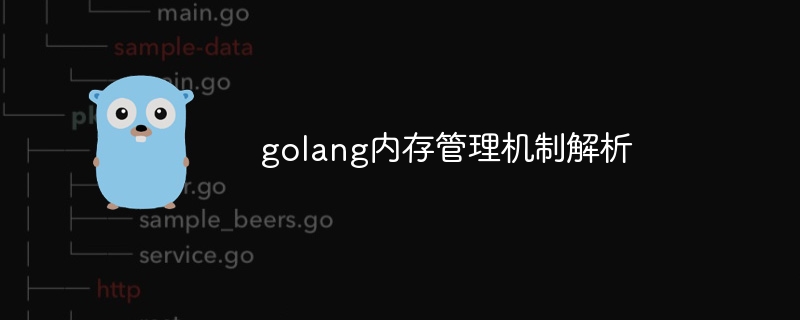Home >Backend Development >Golang >Golang memory management mechanism analysis
Golang memory management mechanism analysis
- WBOYWBOYWBOYWBOYWBOYWBOYWBOYWBOYWBOYWBOYWBOYWBOYWBOriginal
- 2024-04-23 16:39:01531browse
The Go language uses a garbage collection mechanism to automatically manage memory and prevent leaks. Memory is divided into stack (local variables), heap (dynamic data), static data and mmap areas. The garbage collector detects and releases the memory of objects that are no longer referenced, including the marking phase and the cleaning phase. The actual case demonstrates the reference counting mechanism. When the count drops to 0, the garbage collector releases the object.

Detailed explanation of Go language memory management mechanism
The memory management mechanism of Go language is called garbage collection, which is responsible for automatically managing memory. To prevent problems such as memory leaks and dangling pointers.
Memory layout
Go language memory is divided into the following areas:
- Stack: stores local variables and other temporary items during program execution data.
- Heap: Stores dynamic data allocated and managed by the garbage collector.
- Static data: managed by the compiler, usually includes global variables and constants.
- mmap area: A special area used to map external files or devices to memory.
Garbage Collection
The garbage collector runs in the background, detecting and releasing memory occupied by objects that are no longer referenced (pointed to). It works according to the following guidelines:
- Marking phase: The garbage collector scans the objects in all active Goroutines (concurrently executing functions) and marks them as "reachable".
- Cleaning phase: The collector releases the memory occupied by all objects that are not marked as "reachable".
Practical case
The following code demonstrates how garbage collection works in the Go language:
package main
import (
"fmt"
"time"
)
func main() {
// 创建一个引用计数为 1 的对象
object := &struct{}{}
// 对对象进行一些引用操作
increaseRefCount(object)
increaseRefCount(object)
// 延迟执行一段时间以让垃圾回收器运行
time.Sleep(time.Second)
// 减少对象引用计数
decreaseRefCount(object)
// 等待垃圾回收器释放对象
time.Sleep(time.Second)
// 检查对象是否已被释放
if object == nil {
fmt.Println("Object has been garbage collected.")
} else {
fmt.Println("Object is still in memory.")
}
}
// 增加对象的引用计数
func increaseRefCount(o *struct{}) {
o = &struct{}{}
}
// 减少对象的引用计数
func decreaseRefCount(o *struct{}) {
o = nil
}In this case,increaseRefCount The function increases an object's reference count by creating a copy of the object and assigning it to a new variable. The decreaseRefCount function decrements an object's reference count by setting a variable to nil.
When the object reference count drops to 0, the garbage collector will release the memory occupied by the object. In the above code, when the object reference count is 1, the garbage collector will not release the object; when the object reference count is 0, the garbage collector will release the object.
The above is the detailed content of Golang memory management mechanism analysis. For more information, please follow other related articles on the PHP Chinese website!

